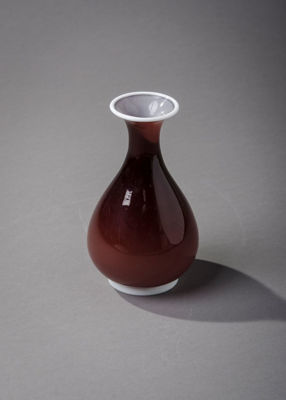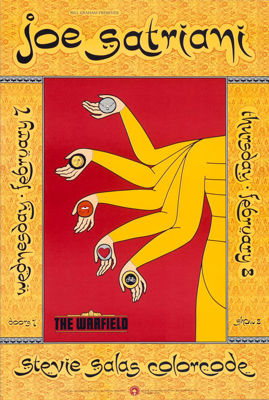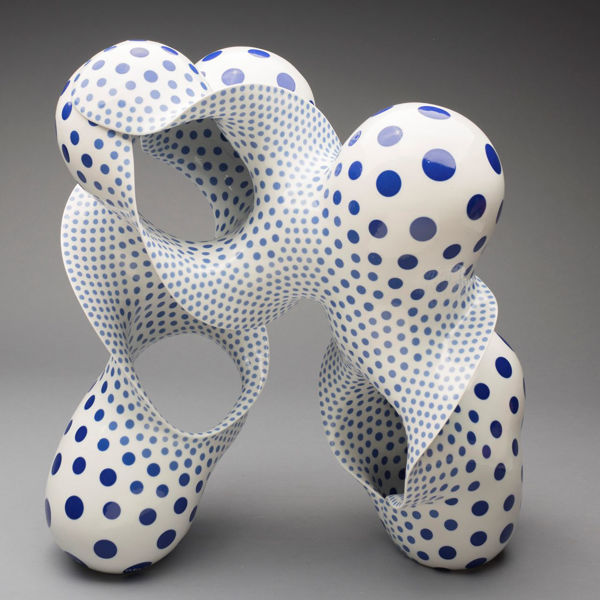Decorative and Design
Title: Illuminated cabinet
Exemplary custom-built midcentury modern cabinet designed in New York by Vladimir Kagan in 1960. The sleek geometry and symmetry of the multi-tiered cabinet is offset by a long, illuminated plane that angles to a resting surface, the positioning and focused use of horizontal banding within a vertical structure recalling midwestern prairie school architecture, or modernist and bauhaus aesthetics. An olive burl veneer adds naturalistic textural depth to the exterior of the wood, the acquired lacquered sheen basking and reflecting in the soft glow emitted from the unique light source.
Title: Incamiato Vase in Purple
Classically-shaped incamiciato vase in shaded purple with lattimo rim and foot marked with gold Venini Murano foil label.
Title: Indus Lantern
Gouda is a style of Dutch pottery named after the city of Gouda. Gouda pottery gained worldwide prominence in the early 20th century and remains highly desirable to collectors today. Gouda pottery is diverse and visually distinctive in appearance, typically illustrated with colourful and highly decorated Art Nouveau or Art Deco designs.
Title: Indus Vase
Gouda is a style of Dutch pottery named after the city of Gouda. Gouda pottery gained worldwide prominence in the early 20th century and remains highly desirable to collectors today. Gouda pottery is diverse and visually distinctive in appearance, typically illustrated with colourful and highly decorated Art Nouveau or Art Deco designs. Six pieces: Two Nova claret jugs (1925), Dorian planter (1925) and low bowl (1923), and Indus vase and lantern (c.1930)
Title: Infinity
The highly ornate and affluent design of Tomita’s ceramics puts them at a distance from other traditionally elementary Japanese work in her field — the artist highly influenced by Islamic architecture and pattern after contact in Portugal at a young age. ‘Infinity’ fuses two baubles, their exterior furnished with a delicately tuned barnacle embellishment that recall organic patterns - the depth of their profile raised with careful application of traditional “iro-e” coloured enamel, and gold decoration added at the final stage of production.
Title: Japonesque Sterling Napkin Rings
Pair of silver flatware napkin holders from the New York silversmithing foundry run by George W. Shiebler from 1876 through until 1910, the rings are formed from a single cast sterling silver leaf which has been rolled and pinned with a single curved end fastener. Ornamental flies and a residual tarnish around the creases and furrows of the leaf add to the naturalistic effect. Naturalistic applied fly perches on rolled and pinned leaf, ca 1885; No monograms; Each marked #254; Longest 2.25"; 3.15 gs.
Title: Jasperware Vase
Fine examples of classic wedgwood Jasperware stoneware, first developed in the 1770s by Josiah Wedgwood. The pottery is now known primarily for the signature pale blue shade of metallic oxide stain. Decorative elements would have been produced separately using a white porcelain shaped in mould, then attached to the face of the vessels as sprigging — the delicacy and complexity of geometric pattern featuring classical subjects, medallion portraits, fruiting festoons and ram’s heads designed under John Flaxman Jr.
Title: Jasperware Vase
Fine examples of classic wedgwood Jasperware stoneware, first developed in the 1770s by Josiah Wedgwood. The pottery is now known primarily for the signature pale blue shade of metallic oxide stain. Decorative elements would have been produced separately using a white porcelain shaped in mould, then attached to the face of the vessels as sprigging — the delicacy and complexity of geometric pattern featuring classical subjects, medallion portraits, fruiting festoons and ram’s heads designed under John Flaxman Jr.
Title: Jasperware Vase
Fine examples of classic wedgwood Jasperware stoneware, first developed in the 1770s by Josiah Wedgwood. The pottery is now known primarily for the signature pale blue shade of metallic oxide stain. Decorative elements would have been produced separately using a white porcelain shaped in mould, then attached to the face of the vessels as sprigging — the delicacy and complexity of geometric pattern featuring classical subjects, medallion portraits, fruiting festoons and ram’s heads designed under John Flaxman Jr.
Title: Jeweled Vase and Cover
Jeweled Coalport Porcelain Vase and Cover, England, late 19th century, with scrolled handles and double wall cover, neck, and foot, red enamel jeweled border above turquoise jeweling to a gold field, pierced and scrolled foliate base, printed crown mark Area of cellwork to cover restored on one side. No evidence of any pitting or loss to jewels.
Title: Jewelry Box
Unusual jewellery box carved from exotic woods. The shape and countenance of the structural form seem influenced by knots and whorls embedded in the grain of the dark wood, resulting in the strange finger-like handles and unstructured but carefully polished top form. A unique combination of natural shape and cabinetmakers intervention.



























